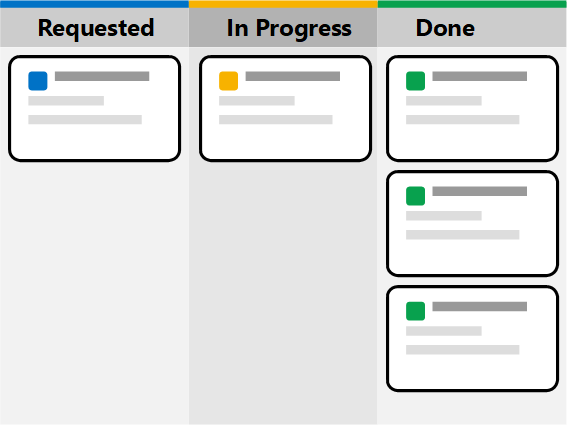The Core Idea of Kanban
The core idea of Kanban is to write down every task on a card and put that coard on a so-called Kanban board.
The prototypical Kanban board is divided in three columns:
Requested or
Backlog
- for known work that has not yet been started
Doing or
In Progress
- for work actively being worked on by someone
Done - for completed work.
The Kanban board can be (and originally was) a literal board with paper cards stuck to it.
The operation of a Kanban board is very simple: whoever starts a work takes a card from the
Requested
column, writes their name on it and moves it to the
Doing
column.
Once the work is completed the card is moved to the
Done
column and the next card can be taken from the Requested column.
